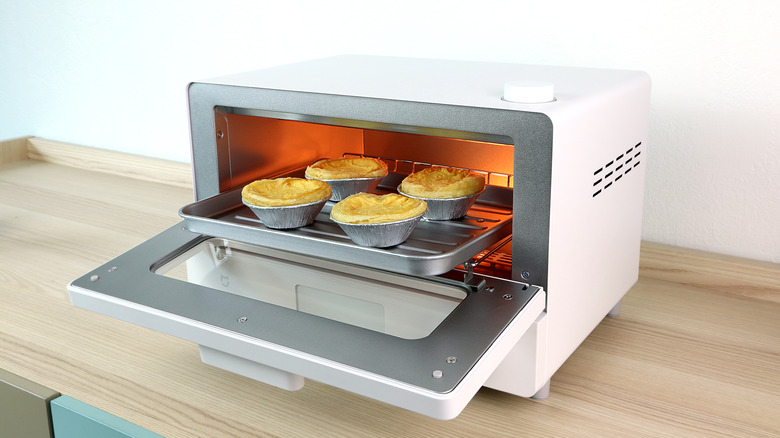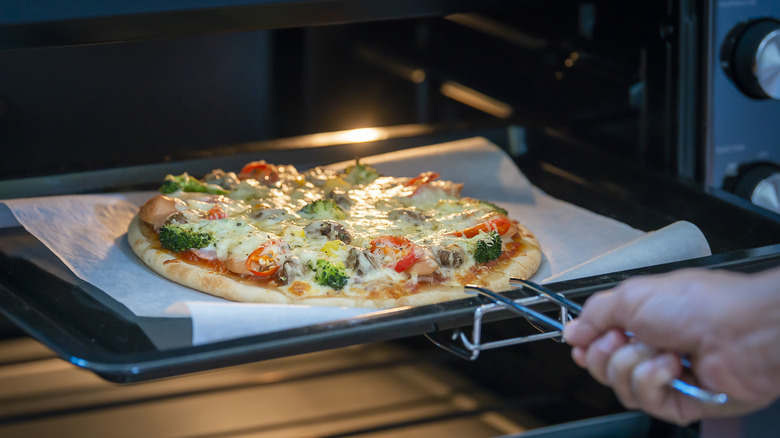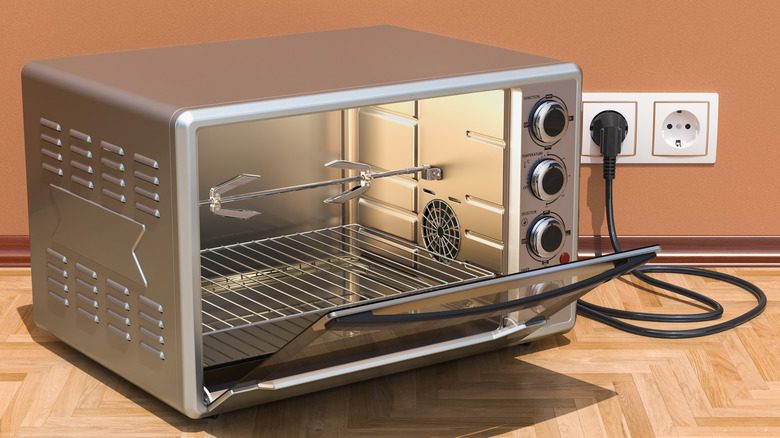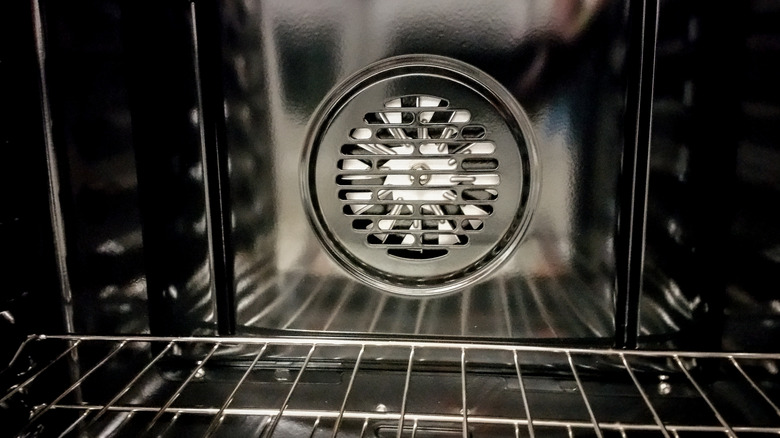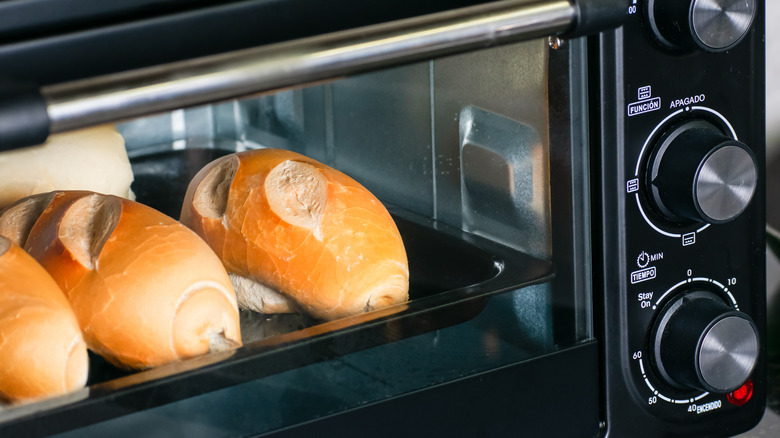What Is The Difference Between A Convection Oven And A Conventional Oven?
The simple question, "What is the difference between a convection oven and a conventional oven?" inevitably leads to another query: "Which one is better?" The first answer is easy — a convection oven uses a fan to circulate hot air. The second answer is more complicated and depends on what you're cooking.
Lopsided muffins, burnt bread, and dried-out roast chicken definitely prove one thing about convection and conventional ovens: There is a big difference between the two. Unlike the free-flowing art of cooking, baking is a science that likes exactness. And roasting requires knowledge of how to convert your baking temperature and time to convection standards.
Both conventional and convection ovens can be heated with gas or electricity, but the heat distribution differs. The heat source in a regular oven is stationary, usually radiating from a heating element at the bottom of the appliance, while in a convection oven, a fan circulates the hot air all around the place. (An air fryer is basically just a countertop convection oven). Convection ovens can also be used as conventional ovens by simply turning the fan off, so you can get the best of both worlds.
What are the advantages of a convection oven?
Convection ovens allow for even, fast cooking because the temperature stays more consistent, while conventional ovens can have pockets of warmer air, or, conversely, cold spots. Hot air rises, so when you're cooking food on both racks in a conventional oven, dishes on the bottom rack may be undercooked while the food on top burns. No such worries with a convection oven.
The air circulation in a convection oven also helps achieve a perfectly crisp skin on roast chicken and beautifully browned quick bread.
What are the cons of a convection oven?
Convection cooking can cause the outside of a cake to bake — and rise — faster than the middle, and the top could blow over to one side. The whole cake could dry out before it's fully risen. Though some bakers have no trouble, it's likely best to turn off the fans and switch to conventional baking for a cake — especially if you're making something delicate like angel food cake or macarons.
Then there's the conversion. You can sometimes cook food up to 25% faster in a convection oven, so you'll want to check your Thanksgiving turkey a little earlier in case it might be in danger of becoming overdone.
And according to CNET, "Conventional ovens typically are 25 to 30 degrees cooler than a convection oven set to the same temperature." So if you're using a convection oven, assume most recipes (unless they specify otherwise) are giving you the recommended cooking times and temps for a traditional oven, and reduce the temperature accordingly by 25 degrees Fahrenheit. But some ovens have options for both modes, with built-in converters. Because convection ovens heat up so fast, there's usually no need to preheat, but you might want to anyway, just in case. Especially for baked goods.
What should you look for in a convection oven?
If you're in the market for a new oven, make sure the oven has the option to turn the convection fan off, says Susan Reid, a King Arthur Flour recipe tester, oven-buyer, cookbook co-author, and editorial director of "Sift," the flour company's newsstand publication. She's a Culinary Institute of America graduate, a teacher at the New England Culinary Institute, and has worked in restaurants. Reid looks for ovens with four controls — bake, convection bake, convection roast, and broil.
Convection bake, which has a lower fan speed, creates lovely dried-out tomatoes or roast tomatoes, as well as dehydrated foods. Convection roast, with its higher fan speed, is great for chunky meat with crispy outsides and for nicely caramelized roasted vegetables. The high fan speed can end up blowing cookies across the pan, or putting tilted "hats" on your cupcakes, Reid says.
Reid recommends using conventional oven settings for quick breads, cupcakes, wet muffin batters, layered cakes, angel food cakes, loaf cakes, sandwich breads, and sweet yeast baking. But others have had great luck with convection-baked quick breads, so experiment as you wish.
Other important tips when it comes to using this device
Always use the setting that the recipe recommends — at least the first time, says Sommer Collier, a recipe developer and author of A Spicy Perspective blog. Check your baked goods five to 10 minutes before the specified bake time when you try the convection method. "I like to use convection on cookies and breads because it tends to create fuller cookies with a crispy exterior and soft center, and perfectly browned crusty bread," Collier says in her piece, "100 Best Baking Tips and Tricks."
Another tip on convection ovens from our sister site, CNET: "The best ones have an additional heating element by the fan, which makes the air moving around the oven a consistent temperature. A consistent temperature means the oven will cook more evenly than models with just a fan. To find ones with the extra heating element, look for terms like 'third-element convection,' 'true convection' or 'European convection' when you're shopping around."
